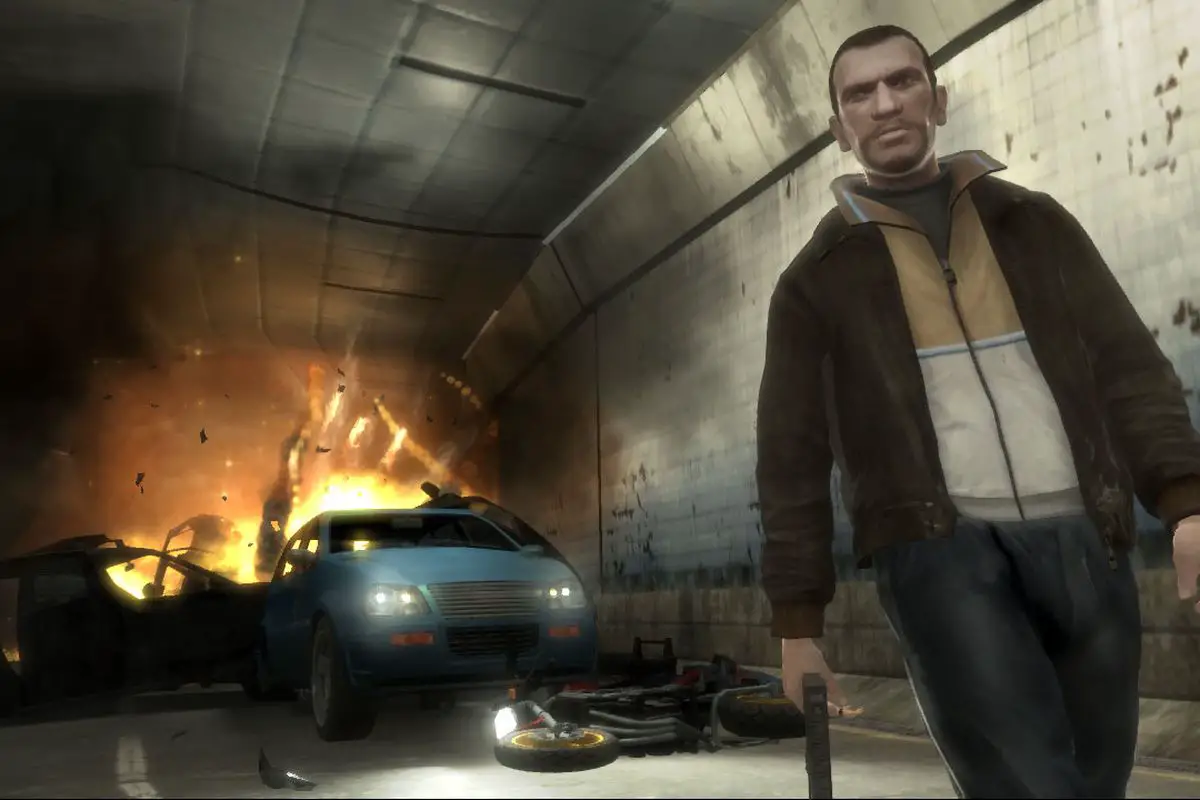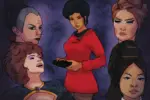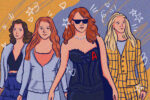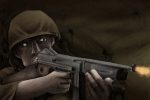“Grand Theft Auto” is a video game franchise that is known for many things — guns, sex, violence and being one the most successful entertainment products in history. Something else that the series is known for is its setting. Each game takes place in a different time period such as the ‘80s, ‘90s or even modern day, but in light of this decade being almost over, it’s time to look at perhaps the most faithfully depicted 10-year span by Rockstar Games: the 2000s.
One of the reasons why Rockstar’s depiction of the 2000s is so great is the fact that it is spread across two games. “Grand Theft Auto 3,” released in 2001, covers the very early 2000s and late ’90s while “Grand Theft Auto 4,” released in 2008, covers the mid to late 2000s. When it was released, “Grand Theft Auto 3” was very influential in the video game industry. It inspired future video games such as “Saints Row” and “True Crime” with its open world gameplay and story.
The game is set in a fictional version of New York City known as Liberty City. Its take on New York is serviceable but does not compare to “Grand Theft Auto 4.” Critics also praised the revolutionary gameplay that had never been done this well before. Something else that was worthy of praise in the game is its in-game radio stations and how they reflected the music of 2001; the radio stations have a little bit of something for everybody, including Rise FM, which plays rave music.
Another music genre that is represented in the game is hip-hop. The early 2000s was a great time for hip-hop fans, especially in New York. In just 2000 alone there were several big releases from New York rappers such as Wu-Tang Clan, Jay-Z, Ghostface Killah and Lil’ Kim. While none of these artists are in the game, the style of music they made is represented very well on the in-game radio station Game Radio, which plays gangster and underground rap. Perhaps the best song to listen to when I played this game as a kid was “Rising to the Top” by Agallah and Sean Price.
I never heard of these two before playing this game, but this song made me an instant fan of them. The other songs on the station are pretty good but I feel that this one is the perfect representation of the grittiness of New York rap in the 2000s. Another perfect representation of the 2000s found in this game is its use of communication technology. Pagers were commonly used in the late ’90s and early 2000s before cell phones made them completely obsolete. Early “Grand Theft Auto” games featured pagers to reflect their popularity during this time period.
They were so popular, in fact, that Rockstar once had a partnership with Motorola to give away pagers bearing the Rockstar logo to people who purchased the first “Grand Theft Auto” game. Players use the pager as a way of gaining information about missions or weapons. Sometimes they might even have to use a payphone, which means that they would have to drive all the way to a payphone. This is something that was changed in “Grand Theft Auto 4.” In that game, players use text messages or cell phone calls as ways of receiving information.
I think the most defining part of the setting in “Grand Theft Auto 4” is its reflection of America after 9/11. Terrorism had always been a concern in America, but when 9/11 occurred, it became a priority. “Grand Theft Auto 3” was released just a few weeks after 9/11, and the game had to be altered. Rockstar executive Dan Houser said the following in an interview about what was altered: “As far as I recall, we changed the color of the cop cars so they weren’t identical to NYPD, we altered the flight path of a plane so that it didn’t look like it was flying into or behind a skyscraper, and we removed one mission as it made a reference to terrorists.”
“Grand Theft Auto 4” includes paranoia of terrorist attacks. At the beginning of the game, there is a news report that plays on the radio mentioning how all of the city’s bridges have been shut down due to a terrorist threat similar to how Manhattan was shut off from the rest of New York City during 9/11. This causes the player to be stuck in one area of the city until the threat has cleared. This is an example of the game’s use of satire to show how paranoid Americans became after 9/11. It is never confirmed whether or not there was a terrorist threat, but it was likely just a rumor spread to feed off of the fear and paranoia that plagued and stills plagues post-9/11 America.
No terrorist attacks are experienced by the player during the game. It is possible that many of the player’s actions are interpreted as terrorist attacks in the mission. The mission, named “Rigged To Blow,” requires the player to drive a truck containing a bomb to a garage and detonating it. If the player listens to the police radio while being chased by the police, they can hear officers warning that the explosion may have been a terrorist attack.
I see “Grand Theft Auto 3” and “Grand Theft Auto 4” as more than perfect representations of the early and late 2000s. They are also perfect depictions of America before and after 9/11. “Grand Theft Auto 3,” like Americans before 9/11, didn’t see terrorism as a huge problem and seemed blissfully unaware of the possibility of something like 9/11 occurring. It is more focused on things like media and entertainment rather than terrorism. The game doesn’t attempt to parody anything surrounding it unlike “Grand Theft Auto 4,” and it goes all in with its satire of terrorism and the paranoia surrounding it. Like America after 9/11, it saw terrorism as a major concern for the country that was worth discussing. As the 2010s come to a close, it’s interesting to look back on the decade that preceded it and how it manifested itself in the “Grand Theft Auto” series.















